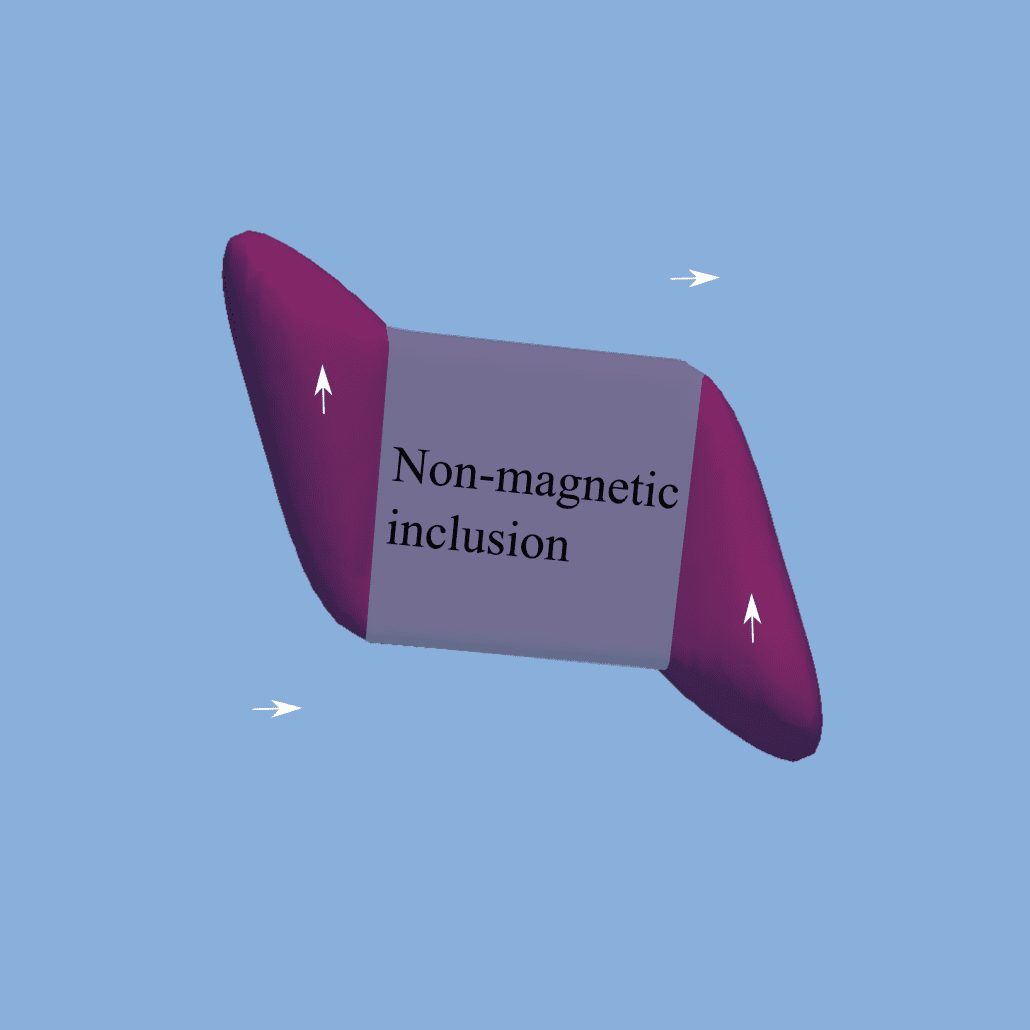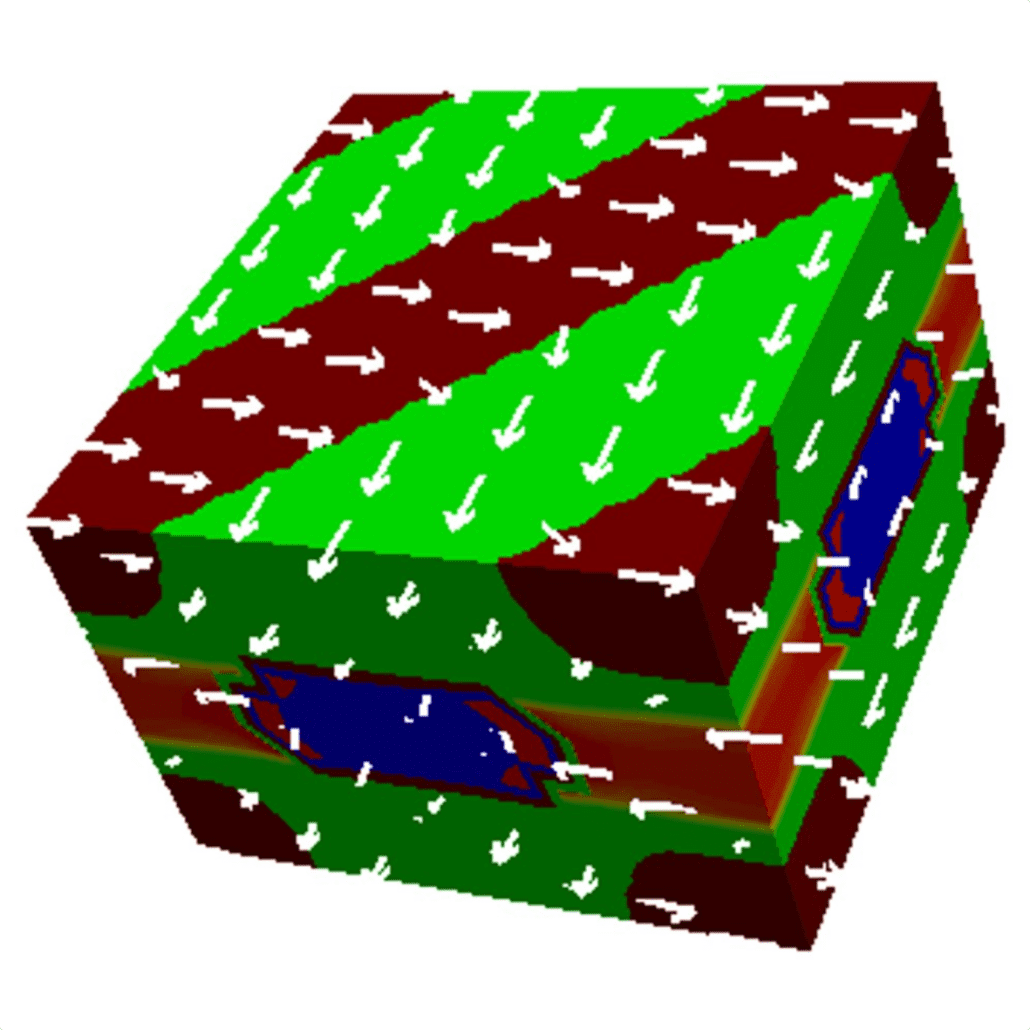Magnetic Hysteresis and Instabilities
A long-standing puzzle in materials science is understanding the origins of magnetic hysteresis in ferromagnetic materials. These materials have an intrinsic magnetic dipole that can be reversed under an applied magnetic field, and this magnetization reversal traces out a characteristic hysteresis loop. Reducing the width of this loop is critical to develop spintronic and energy conversion devices. Currently, a widely accepted strategy to lower the hysteresis in cubic ferromagnetic alloys is based on changing its chemical composition to reduce the magnitude of a material constant, called the anisotropy constant. While this strategy has resulted in soft magnetic alloys it does not explain the complete story of coercivity.
Photomechanical Materials and Microstructures
An emerging class of phase transformation materials are the photomechanical molecular materials that respond to a light stimulus. These materials consist of discrete molecules that are held together by intermolecular interactions and have a crystalline order that is intermediate to inorganic crystals and polymers. On exposure to light, these materials undergo an abrupt solid-to-solid change in their crystal structure that is characterized by a wide range of extreme deformations, such as jumping to distances >103 their size, exploding into several pieces, and exhibiting complicated modes of deformations like coiling, twisting, and bending. The origin of these variations in mechanical deformations of the photomechanical materials is still an open question. We are developing a continuum theory for photomechanical materials to understand how structural transformations and microstructural evolution pathways make some materials jump while others bend or twist.
Battery Materials and Crystallographic Design
Repeated phase transformations in materials are accompanied by a decay of material properties. For example, the repeated cycling of multiferroic materials through phase transformation causes its Curie temperature to migrate. Similarly, in intercalation materials, repeated charge/discharge processes are accompanied by structural damage and hysteresis. The origins of fatigue and hysteresis in phase transformation materials is not well understood. Our research aims to investigate the delicate interplay between atomic scale crystallographic changes and the continuum scale microstructural evolution that shapes physical properties of phase transformation materials. We focus on one candidate material—intercalation materials that are used as electrodes in rechargeable batteries—and are developing continuum models to gain quantitative insights into how crystallographic microstructures nucleate and grow during phase transformation.




